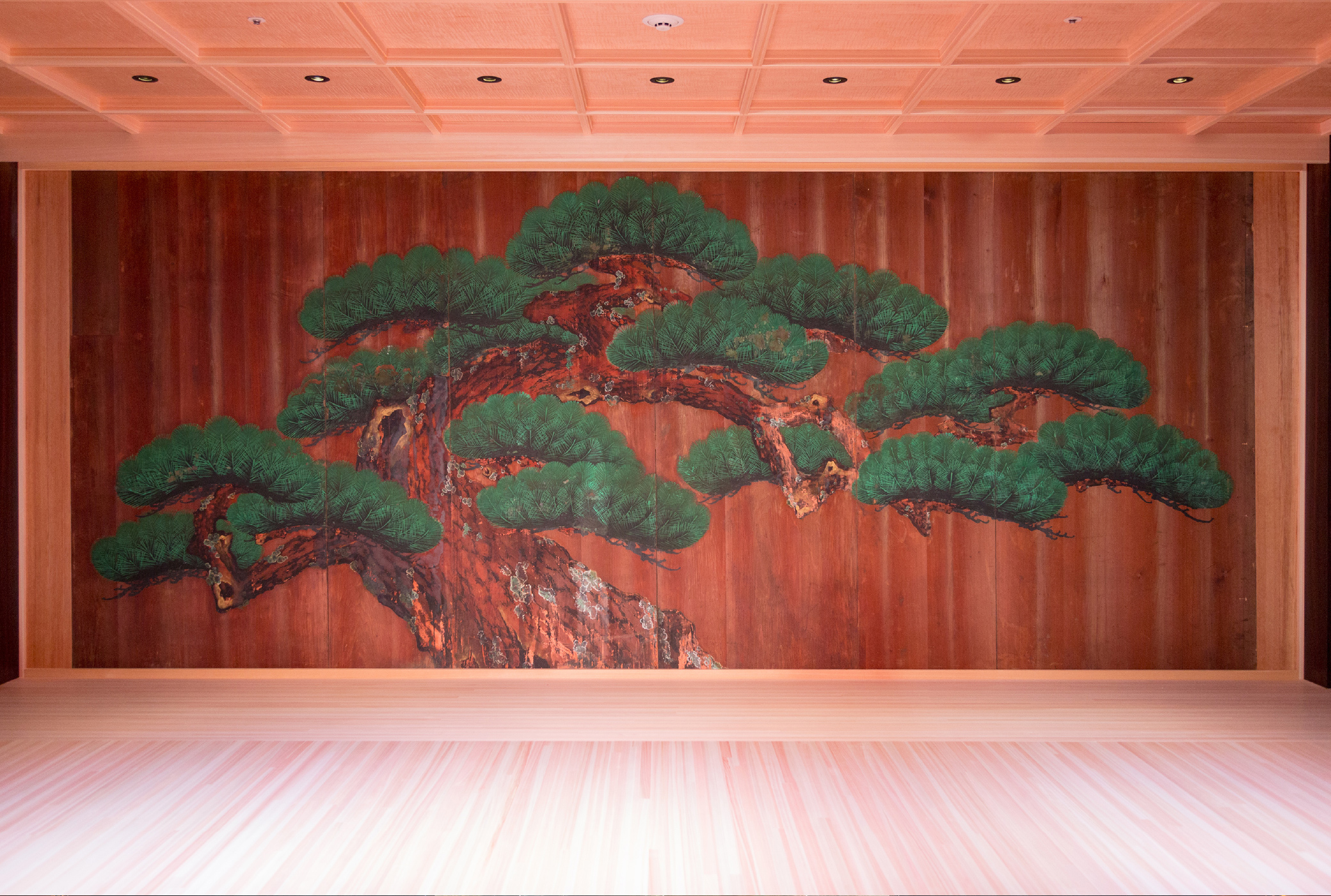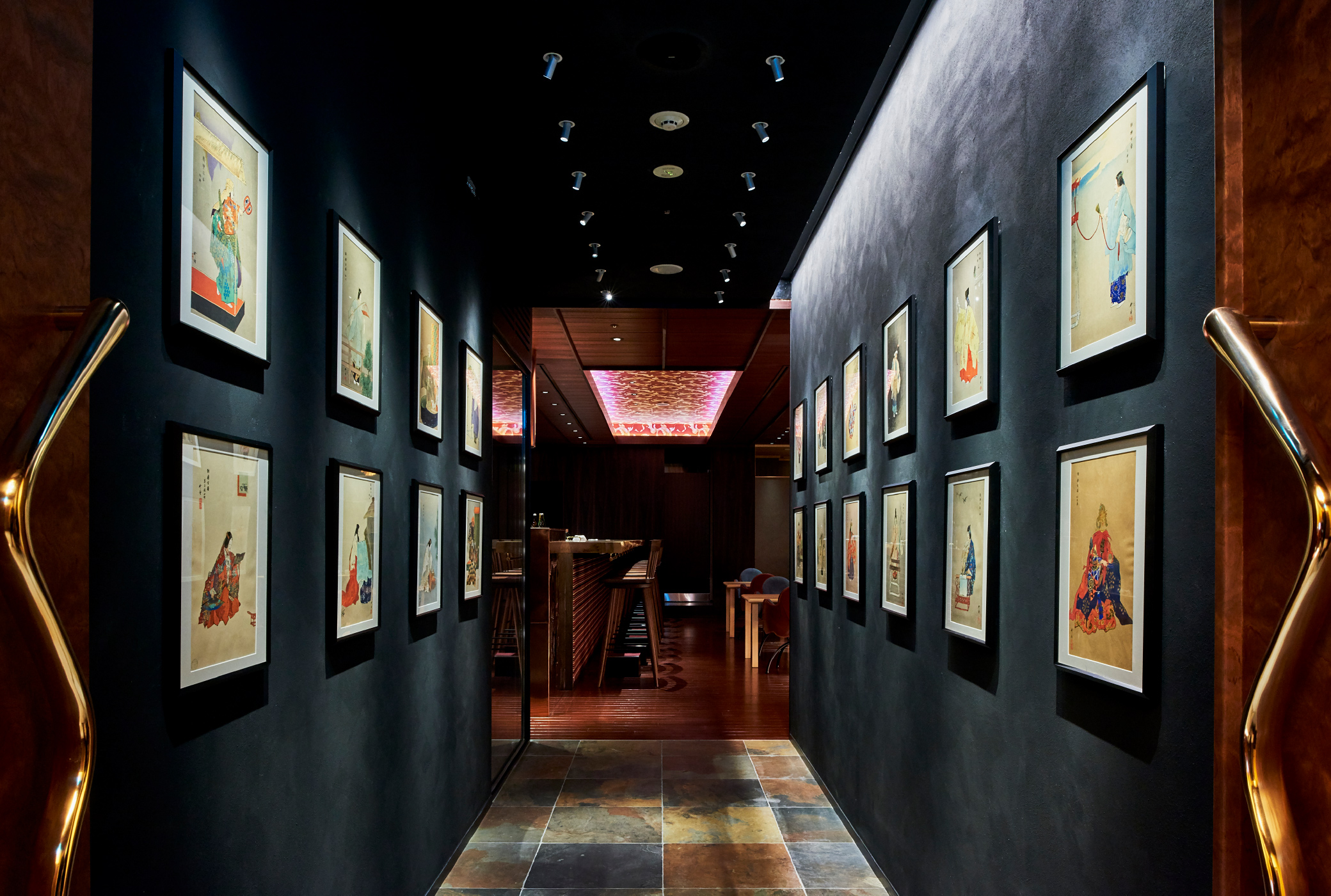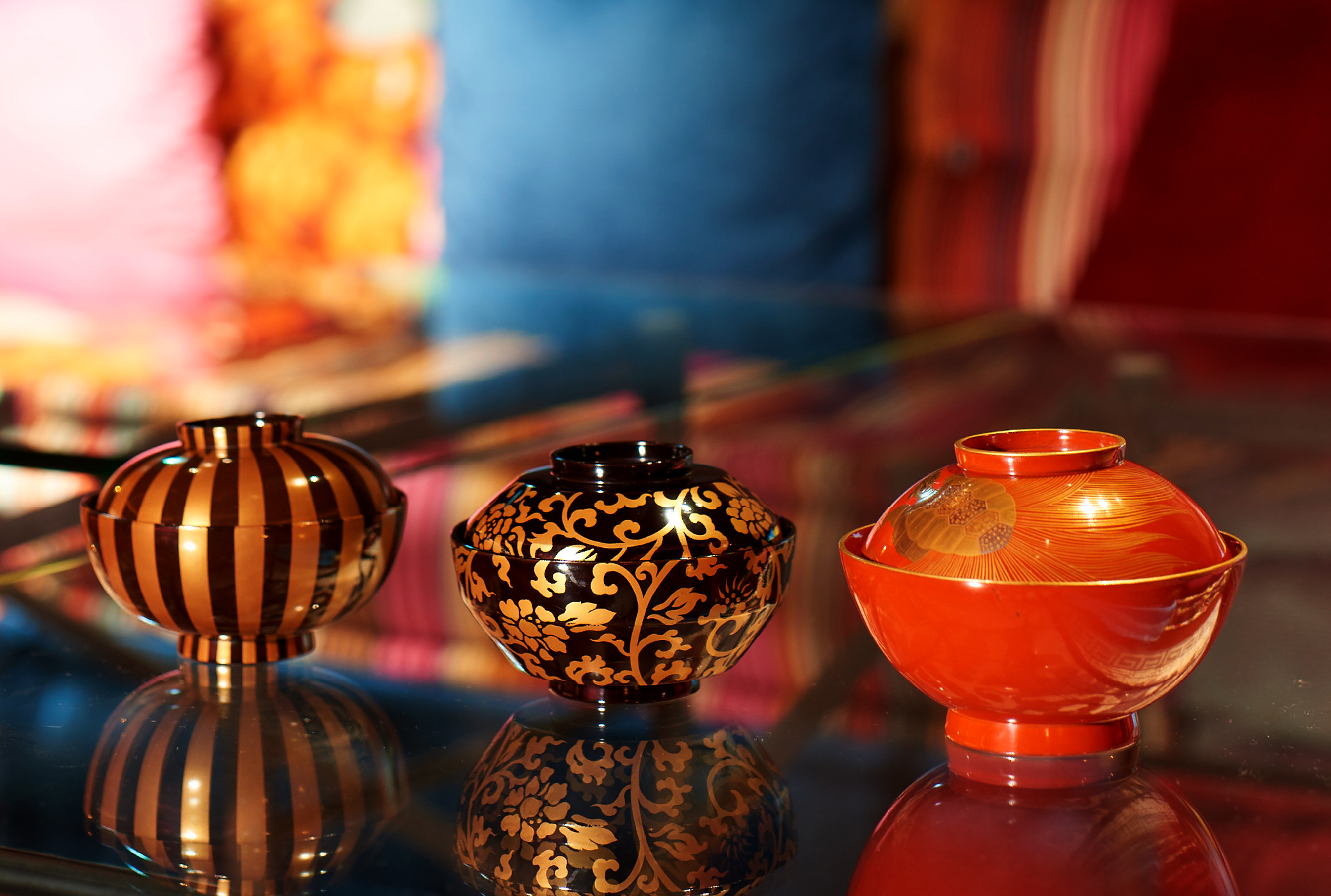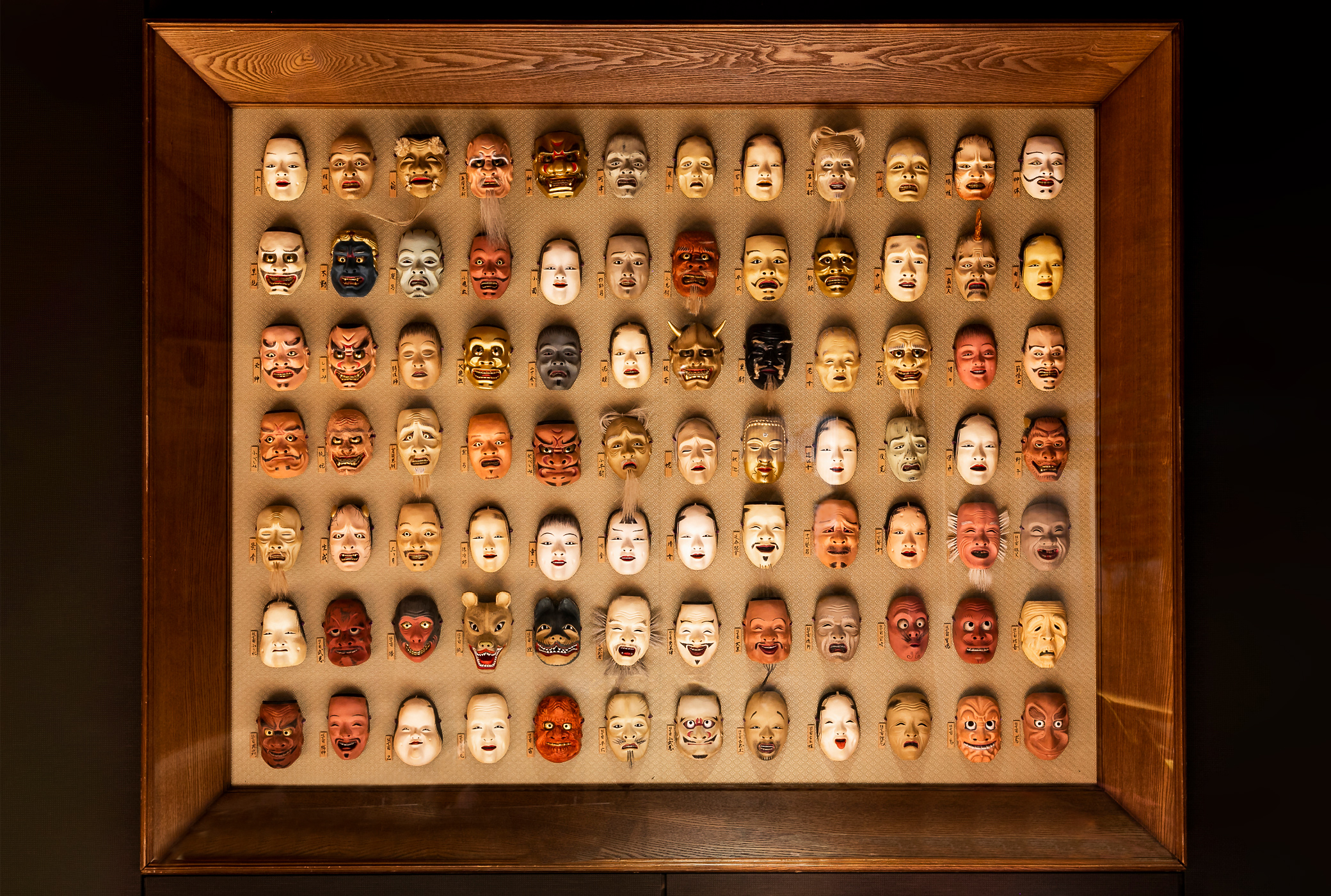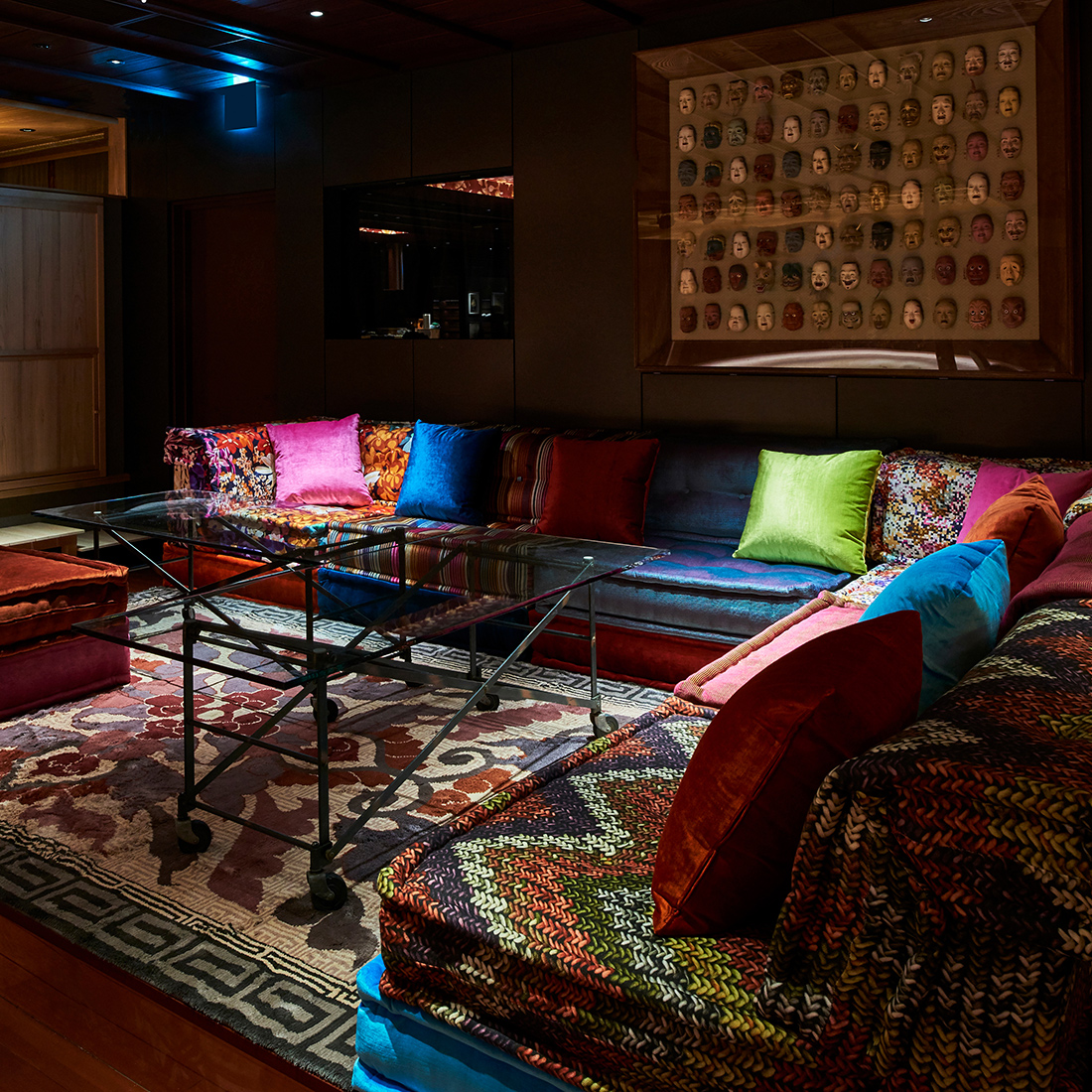
A Noh stage, tea room,
and the world-class interior and lighting that decorate SUIGIAN,
as well as a variety of arts such as dishware and trays,
textiles, and Ukiyo-e that pass on the Japanese tradition...
A singular space where Japanese and Western, tradition and innovation,
are fused in a world view as only the SUIGIAN, can do.
Lounge chairs modeled after sofas designed by Nabeshimadantsu and MISSONI,
carefully preserved and passed down
by generations of feudal lords of the Saga Domain,
food and drinks served in dishware and drinking vessels of the Edo, Meiji,
and Taisho Periods.
Traditional culture lurks in all these special little experiences at SUIGIAN.
Further, at SUIGIAN, we use many trays that are not now commonly used at tables.
Though these have gone out of use due to the westernization of modern lifestyle,
we use these beautiful trays in the present in multipurpose ways.
Many of these trays and dishes boast a history of more than 350 years in Nagasaki.
We inherited them from the famous FUKIRO,
which closed in 2017 and was frequented by the likes of Hirobumi Ito,
Ryoma Sakamoto, Shojiro Goto, Yataro Iwasaki, and Thomas Blake Glover.
